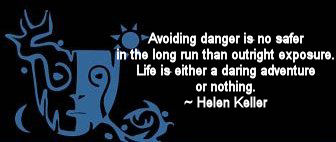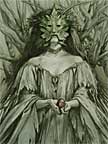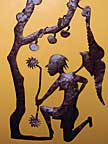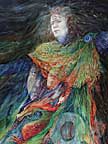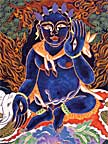|

An Analysis of the Car Crash of James Dean,
Together With a Consideration of His Transformation
Into the God of Roads and Highways
by John David Ebert
I.
 When did James Dean's car crash occur? When did James Dean's car crash occur?
On September 30, 1955 at 5:45 p.m.
Where was he going?
To an amateur road race in Salinas.
Where had he been?
He had just finished shooting the movie Giant. In fact, just a couple of weeks before the accident, he had made his last appearance in front of a camera for a public safety announcement in which he admonished young viewers to drive safely. "I find myself being very cautious on the highway," he says. "I don't have the urge to speed on the highway." When the interviewer asks him if has any advice to give the young, he tells them to be careful because, as he puts it, "The life you might save might be mine."
Who was riding to Salinas with him?
His German auto mechanic, a man named Rolf Weutherich, who had already been in two previous accidents and would die in a car accident in Kupferzell, Germany on July 20, 1981. He had just signed a contract with an American book publisher to tell his story about James Dean.
What road were they traveling on at the time of the accident?
U.S. Highway 466. They were approaching the Y shaped intersection with Route 41. (In ancient myth and folklore, crossroads normally have sinister connotations. They are liminal zones where the boundaries of the known world rub up against the supernatural. Criminals and suicides were often buried at crossroads. The Greek witch goddess Hecate was normally worshipped at crossroads, which is why she was also known as Trivia [i.e. "three roads"] and represented as having three faces. Hermes, the guide of souls to the underworld, often had "herms," or ithyphallic pillars, consecrated to him at such intersections. And let us not forget that Oedipus unknowingly slew his father Laius at a crossroads. It is, therefore, understood by the deep psyche as a place of anxieties.)
What direction were they traveling?
They were headed west, into the setting sun, which for a while had been blinding them. But the sun had already disappeared behind the mountains ranged along the horizon at the time of the crash, and the yellow-brown hills around them had been shading off into a dim, purplish gray.
(Note that the West is traditionally the direction of the Underworld in most, but not all, systems of mythology. In Egypt, for instance, it is the realm of Amenti, where the soul travels along an underground river and must survive a number of tests and ordeals in order to find its way to the throne of Osiris. Thus, Dean's trajectory may have some significance in light of this fact).
Were his headlights on?
Dean had not yet turned on his headlights, though if he had, it is possible that the oncoming car would have seen him. (In dream symbolism, a car with its headlights off would signify a dead body. With headlights on, it would mean that there was an animating spirit present. )
In other words, both landscape and circumstance had conspired to render Dean effectively invisible?
"Jimmy says he can go so fast on his motorcycle that no one can see him!" Thus Jay Hyams, one of the authors of a Dean biography, reports Dean as having told him as a child. Apparently, Dean's lifelong addiction to speed was part of a dream to accelerate his physical body to the point where it could no longer be detected by the human eye. Of course, this would only be literally possible for an object traveling at light speed, but at the time of his death, Dean had nonetheless finally attained this dream of becoming invisible through the acceleration of his physical body. The car he was driving was perilously low to the ground and colored silver and so, in the murky desert twilight, with no headlights on, would have been all but invisible to oncoming traffic.
 What kind of car was he driving? What kind of car was he driving?
A 1954 Porsche 550 / 1500 Spyder RS. Introduced at the Paris Motor Show in 1953, the Porsche 550 featured a two seat, open-top aluminum body fitted over a tubular ladder chassis with an MR layout mid / rear mounted, 1.5 litre, air-cooled flat 4 cylinder shaft-driven dual overhead cam engine which weighed about 550 kg (1213 lb.) (The engine was designed by Dr. Ernst Fuhrmann).
Dean's car was nicknamed "Little Bastard," which was painted onto its rear end, while the number 130 was painted onto its front and rear hoods as well as side doors in black paint. (The Little Prince was one of Dean's favorite books, and the nickname "Little Bastard" was given to him by one of the crewmembers who had worked on Giant with him. Thus, like the incarnation of the Hindu god Vishnu who begins as the dwarf Vamana, and takes three steps in order to claim the world for himself, with the third step becoming a giant who encompasses the universe, Dean was also the "Little Bastard," [physically, he was quite small] who ended by becoming a "Giant.")
(In Hebrew mysticism, by the way, the number "130" has a gematria value spelling the word "sulam," meaning "ladder," as in the vision which Jacob had while sleeping of angels running up and down the ladder of heaven. The number 130 also has the value of "Sinai," which is another kind of ladder, for it is the mountain of the meeting point between man and god. Either way, 130 refers to another type of crossroads, the meeting point between heaven and earth.)
What kind of car did he crash into?
A black and white 1950 Ford Tudor sedan. If Dean's car was the "Little Bastard," this thing was the "Giant" by comparison.
Who was driving this other car?
A man named Donald Turnupseed, a 23 year old California Polytechnic State University student. He died of lung cancer in 1995 at the age of 63.
How fast was Dean going?
No one is certain of this. Initial reports suggested something like 80 mph, while later reports tended to downplay this, offering a more modest 55 mph. However, recent computer generated tests have suggested an impact speed of more like 70 — 75 mph.
How did the accident happen?
The driver of the Ford, Donald Turnupseed, was headed east, in the opposite direction, and was turning left off of Highway 466 and onto Route 41. He didn't see Dean until it was too late. Dean did not have time to brake, and instead seems to have accelerated and swerved to the right in an attempt to go around the Ford, but he did not have sufficient room to clear the huge car, and smashed into its front end driver's side, which plowed into Dean's body, crushing his chest and forehead and snapping his neck, while throwing Wutherich out of the car. The Porsche spun 45 feet to the northwest, where it landed near a telephone pole, while Turnupseed's car rotated counter clockwise and slid about 39 feet in the opposite direction.
What was the official cause of death as listed on Dean's Certificate of Death?
"Broken neck
multiple fractures of upper and lower jaw
multiple fractures of left and right arm
internal injuries"
What did James Dean dream about on the night before the crash?
We don't know, but we do know that he had lately been having a recurring dream in which his dead mother (who died when he was nine years old) was beckoning to him as though trying to tell him something, but his feet are sinking in quicksand and he is having trouble understanding her message. It is possible that she was beckoning to him from beyond the grave to come and join her in the afterlife. His mother's death troubled him all his life, and he felt guilty about it, for his father's rejection of him implied to his young psyche that he had somehow been responsible for her death. Much of his own self-destructive behavior seems bound up in this psychological knot.
Is it, then, possible that the dead can communicate with us in our dreams?
 Archaic humanity certainly believed so. In this view, life after death might be something we experience in a kind of twilight consciousness akin to dreaming or sleepwalking. That is to say, things would happen around us in the afterlife just the way they do in dreams; the difference being that we never wake up, and the dreams just keep going on all around us. I can imagine a scenario in which each one of us is confined to his own little cell in the underworld, dreaming, as though part of a gigantic hive. Every now and then, the soul or monad of one of these dreaming beings may project itself forth into the physical world as the temporary dream of a three dimensional life. According to this view, then, each one of us is really the dream experienced by a being lying asleep in a tomb inside of a cell in the towering hive of the underworld. Archaic humanity certainly believed so. In this view, life after death might be something we experience in a kind of twilight consciousness akin to dreaming or sleepwalking. That is to say, things would happen around us in the afterlife just the way they do in dreams; the difference being that we never wake up, and the dreams just keep going on all around us. I can imagine a scenario in which each one of us is confined to his own little cell in the underworld, dreaming, as though part of a gigantic hive. Every now and then, the soul or monad of one of these dreaming beings may project itself forth into the physical world as the temporary dream of a three dimensional life. According to this view, then, each one of us is really the dream experienced by a being lying asleep in a tomb inside of a cell in the towering hive of the underworld.
What were Dean's last words?
"Don't worry, that guy'll stop. He's gotta see us." Strange words for a man who had attained invisibility. But perhaps, like the Invisible Man when his experiment was first beginning to work, he did not yet know that he had become invisible?
What myth was Dean performing by means of his accident?
The myth of the youth Phaeton who, uncertain of his father's paternity (his father happened to be Helios, the sun) was advised by his mother to journey east and find out. So Phaeton traveled to his father's abode and his father admitted that Phaeton was indeed his son and as proof of this, agreed to grant him any boon he wished. Phaeton wanted to drive the sun chariot for one day, and so Helios reluctantly agreed. But the four horses, sensing an unsure hand, ran wild and they tore a gash into the sky that became the Milky Way. Then they ran so closely to the earth that they scorched it and caused the inhabitants of Africa to turn black and the rivers to dry up until Zeus finally struck Phaeton with a thunderbolt in order to bring him down. The youth plunged to the earth, where he fell to his death into the river Eridanus. His sisters stood on the banks of the river and wept ceaselessly until they were changed into poplars. Thus Ovid.
Immanuel Velikovsky has suggested that the Phaeton myth is a disguised fable of a comet that crashed into the earth and dislodged it from its vertical axis. And indeed, the death of James Dean seems to have altered the morphology of popular culture to such an extent that, had it never occurred, the topography of its landscape would not look remotely like what it does now. Dean was the archetypal shooting star who fell to earth like a being from another world, and whose impact generated a whole cult of celebrities who tried to imitate him by performing their own crashes in his image.
What was he wearing on the day of his death?
 A T-shirt, blue jeans and the red jacket that he had worn in Rebel Without a Cause. The movie was released a few days after his death, and it immediately spawned a red jacket craze. High school kids wore red jackets everywhere and the shop that had produced them in Hollywood could barely keep up with the demand. Thus, the disciples participate in the master's myth by seeking to imitate him. A T-shirt, blue jeans and the red jacket that he had worn in Rebel Without a Cause. The movie was released a few days after his death, and it immediately spawned a red jacket craze. High school kids wore red jackets everywhere and the shop that had produced them in Hollywood could barely keep up with the demand. Thus, the disciples participate in the master's myth by seeking to imitate him.
Is there any evidence that Dean had been rehearsing his crash for a long time?
In fact, there does seem to be such evidence. He was addicted to speed and he was notorious for being a reckless driver who terrified anyone unfortunate enough to get into a moving vehicle with him. He had several near accidents with his motorcycles and his sports cars while driving along the winding curves of Los Angeles roads. The scene in Rebel Without a Cause, in which he races against another driver in a chicken run to see who can stay in their car the longest before driving over a cliff seems, in retrospect, to have been a celluloid rehearsal for his death. It is almost as though he were trying it out to see how death by car crash might feel. And he was always dropping little hints to the people who knew him that he fully expected to die young. He simply had no intention of living past the age of 30.
In short, his crash came as a surprise to no one, for he was warned many times that he would die this way by friends and acquaintances. There is the famous story about the actor Alec Guinness who, upon viewing Dean's new Porsche 550, predicted that if Dean persisted in driving it, then he would be dead within a week's time. (This was on September 23; he was killed exactly seven days later). Yet, Dean chose not to heed any of these warnings. He had been practicing his death for many years, and he was not about to let anyone get in his way. He knew that his death would transform him into a god, and that is precisely what he had always wanted.
The crash, then, was 'deliberate'?
Dean's crash made him the 'giant' that he otherwise would never have become without it. Had he gone on living, as in the case of Marlon Brando, he would never have attained the mythic stature that he has since acquired.
What would an Old Testament prophet have made of Dean's crash?
Probably nothing, but the female mourners of Tammuz would have set up one hell of a racket. Witness the following spectacle from one of the biographies: "This is why one girl cried out during the showing of Giant: 'Come back, Jimmy! I love you! We're waiting for you!'" (Dalton, p. 317)
If Dean had never crashed, is it possible that subsequent celebrities like Jackson Pollock (1956), Albert Camus (1960) or Jayne Mansfield (1967) might never have chosen to perform their crashes in imitation of his?
In order to perform a myth, there must first be a prototype. Every archetype has a prototype, and Dean was the prototype of the man for whom the acceleration of his persona to light speed via celluloid was simply not fast enough. He desired the acceleration of his physical body to light speed. Of course, that dream always remained only a dream, but it was, nevertheless, the ideal that lay behind his acquisition of faster and faster cars and of participating in more and more races over time. But, once attained, the translation into immortality via death by car crash became one of the three primary possibilities by means of which a celebrity could attain mythic status, the others being death by drug overdose or shooting by a stalker. Each of these archetypal death scenarios involves the enactment of a myth: the car wreck, as we have seen, is the myth of the solar charioteer who crashes into the earth; death by overdose is the myth of Narcissus, who sinks and falls into his own narcotized ("narcotics") trance; and the third is the myth of the murder of the hero by one of his disciples, a la Set and Osiris or Judas and Christ.
Thus, Dean establishes for all time the scenario of Celebrity Death by Car Crash that his envious imitators will seek to perform after him.
What god, through his death, did James Dean actually become?
Once we have weighed all the evidence, it appears that Dean was trying to become a modern incarnation of the god of transportation. Perhaps this is why it was so important to him to stage his crash out in the empty wilderness of a lonely American highway, so as to assure us of his intentions and that we would not mistake him. If he had died in Los Angeles, there would have been some ambiguity about his intentions since we wouldn't know whether he had intended to become a god of the city or of the road. But by staging his death out on the highway, it is as though he were specifically drawing our attention to the fact of the highway itself, entirely independently of any city connected to it.
In ancient myth, the gods of transportation are figures like Hermes or Mercury, the protector of travelers and guide of souls over the pathways to the underworld. In Vedic India, this figure was known as Pushan, whose chariot was pulled by goats because goats are able to access difficult, rocky pathways beyond which underworlds are normally located. (The vector along which Dean was traveling, namely West, should alert us to this, for gods of transportation are normally gods who guide souls to the Land of the Dead). In later Hinduism, Pushan is displaced by Ganesha, the elephant-headed god who clears away all obstructions from one's path, just as an elephant cuts its own pathway through the jungle. In the Christian cosmos, this god becomes Saint Christopher, the patron saint of travelers, for according to the tradition Christopher was a giant named Reprobus who bore the Christ child across a river and was thereupon given the name of "Christ bearer" (Christos and pherein, "to bear") Thus, in automobiles, Catholics normally hang St. Christopher medallions from the rearview mirror. Dean's Catholic girlfriend Pier Angeli, perhaps intuitively sensing Dean's connection with gods of transportation, gave him a St. Christopher medallion which he wore for a time around his neck.
 Nearly a year after Dean's death on Highway 466, the Federal Aid Highway Act was instituted on June 29, 1956, when a dying Eisenhower signed this bill into law. The intent was to create 41,000 miles of interstate highways over a decade, and at a cost of around $25 billion. However, the project was not completed until 1991, and ended up costing over $114 billion to finish. The idea for the project was born out of Eisenhower's experiences traveling in a military convoy across the United States in 1919 from the White House to San Francisco. The roads at the time were so bad that it inspired his vision of a mesh of Interstate Highways connecting American cities together in order to maximize the flow of traffic, especially necessary in cases of emergency. Nearly a year after Dean's death on Highway 466, the Federal Aid Highway Act was instituted on June 29, 1956, when a dying Eisenhower signed this bill into law. The intent was to create 41,000 miles of interstate highways over a decade, and at a cost of around $25 billion. However, the project was not completed until 1991, and ended up costing over $114 billion to finish. The idea for the project was born out of Eisenhower's experiences traveling in a military convoy across the United States in 1919 from the White House to San Francisco. The roads at the time were so bad that it inspired his vision of a mesh of Interstate Highways connecting American cities together in order to maximize the flow of traffic, especially necessary in cases of emergency.
It is almost as though Dean's death were a sacrifice which, once performed, could allow construction on the highway systems to begin. For whenever the ancients wanted to build a new temple or a public building of some sort, a sacrifice was always necessary (such sacrifices were often human, but usually, they were animal). The bones were normally buried inside the building, and it was thought that the indwelling spirit of the animal could then be transferred to the building in order to animate it.
Every new environment demands new gods to live in it in order to mark and sanctify the habitation as a dream born with the blessings of the gods. In the newly emerging world of the fifties postwar suburban dream, James Dean was to become the patron saint of highways, automobiles and above all, car crashes.
In ancient Greece, the Eleusinian mysteries involved a ritualized reenactment of the abduction of Persephone and the grief-stricken wanderings of her mother Demeter, as initiates would travel along the Sacred Way, stopping at certain key points in order to imitate the actions of Demeter's search for her abducted child. In like fashion, the occurrence of annual activities such as the 'James Dean Death Drive,' in which the faithful perform the myth of their dying god by retracing his route along the backroads of California highways, stopping at this gas station or that store where Dean had stopped on the day of his death, is a confirmation that James Dean is indeed in the process of becoming a deity, the god, namely, of roads and highways.
One day, perhaps not too far in the future, I can imagine some traveler invoking him before setting out on a journey with his horse-drawn automobile over the cracked and weed-infested asphalt of our by then decayed and ruptured roads. Dean will be invoked to guard against calamity — for he is a god familiar with terrible accidents-and to bestow safe passage on long journeys. His connection with film, at that time, will have been long since forgotten; he will exist only as a hazy figure, the Red One, perhaps, whose spirit haunts the backroads and by-ways between the hinterlands of civilization.
 John David Ebert is a former editor for the Joseph Campbell Foundation. He wrote footnotes for Baksheesh & Brahman, Sake & Satori and The Mythic Dimension, all posthumous publications of Campbell's writings. His first book was Twilight of the Clockwork God: Conversations on Science and Spirituality at the End of an Age John David Ebert is a former editor for the Joseph Campbell Foundation. He wrote footnotes for Baksheesh & Brahman, Sake & Satori and The Mythic Dimension, all posthumous publications of Campbell's writings. His first book was Twilight of the Clockwork God: Conversations on Science and Spirituality at the End of an Age (Council Oak Books, 1999). His most recent book is entitled Celluloid Heroes & Mechanical Dragons: Film as the Mythology of Electronic Society
(Council Oak Books, 1999). His most recent book is entitled Celluloid Heroes & Mechanical Dragons: Film as the Mythology of Electronic Society (Cybereditions, 2005), and was reviewed by Dr. William Doty in the August 2005 issue of Mythic Passages. His work has been published in various periodicals such as Utne Reader, The Antioch Review, Lapis and Alexandria. He is currently working on a book about popular culture and mythology, tentatively entitled Electric Demigods of the Lightspeed World. (Cybereditions, 2005), and was reviewed by Dr. William Doty in the August 2005 issue of Mythic Passages. His work has been published in various periodicals such as Utne Reader, The Antioch Review, Lapis and Alexandria. He is currently working on a book about popular culture and mythology, tentatively entitled Electric Demigods of the Lightspeed World.
Read more by John Ebert at his website cinemadiscourse.com
Return to Passages Menu
Subscribe to the Passages e-zine
|
